My garden has been planted by birds – not totally, but partly. The birds brought the seeds and dropped them haphazardly. In most instances I allowed the plants to develop to maturity if they are not in the way of things. I had a trumpet tree (Cecropia peltata) growing for some months (top left). It was a male tree, a New World species that has become a weed in this part of the world. It grew too tall and threatened to invade my neighbour’s air space. As it was not a spectacular bird tree, I chopped it down.
I still have the umbrella tree (Schefflera actinophylla), native to New Guinea and Australia (above centre). It twice flowered, but each time the trunk broke before the flowers could form fruits. So I have yet to be given an opportunity to document the birds that are attracted to the flowers and fruits, except the Banded Woodpecker (Picus miniaceus) that came for the ants.
The two noni trees (Morinda citrifolia) by the gate are constantly flowering and fruiting (above right). They are popular with sunbirds and flowerpeckers that visit for the nectar in the flowers. The mistletoes (Dendrophthoe pentandra, Macrosolen cochinchinensis) that grow from the branches attract these delightful birds when they are in flowers and fruits. At least three species of birds are attracted to the fruits.
The white-stemmed button vine (Cissus hastata), a prolific scrambler, is growing all over the trees and palms. It is fruiting profusely, providing food for birds (top left).
Seedlings of sendudok or melastome (Melastome malabathricum) (above centre) litter the ground and I have transplanted a few and they are fruiting, attracting Scarlet-backed Flowerpecker (Dicaeum cruentatum).
The colourful seedlings of mahang (Macaranga javanica) regularly appear (above right). Two have grown tall, taking over the space of the trumpet tree. I am hoping these will flower soon and look forward to observing the birds that are attracted to them. Then if they grow too tall, they also have to give way to others.
There are a few more plants brought in by the birds, but they have to wait their turn, as I do not have enough space for them all. The wild cinnamon (Cinnamomum iners) (top left) is waiting to fill the garden. Then there is the salam (Syzygium polyanthum) (top centre) and what looks like a wild brinjal (Solanum sp.) (top right). The first two are great bird trees, I am not sure of the third shrub.
A garden planted by birds is guaranteed to attract birds.
YC Wee
Singapore
February 2008


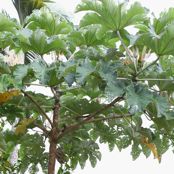
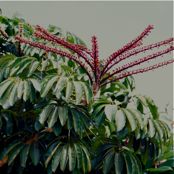

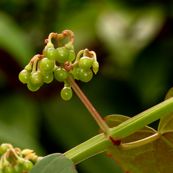
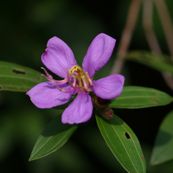
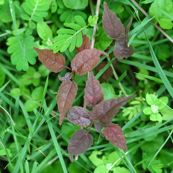
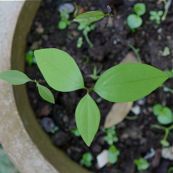
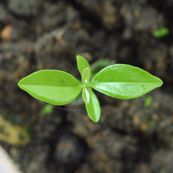
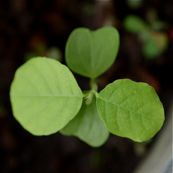







3 Responses
Can I have a location of your garden?
I’m working on cecropia peltata as an invasive species and I try to collect occurence data of the species. Can you mail me [email protected] your cecropia location?
Thank you very much!